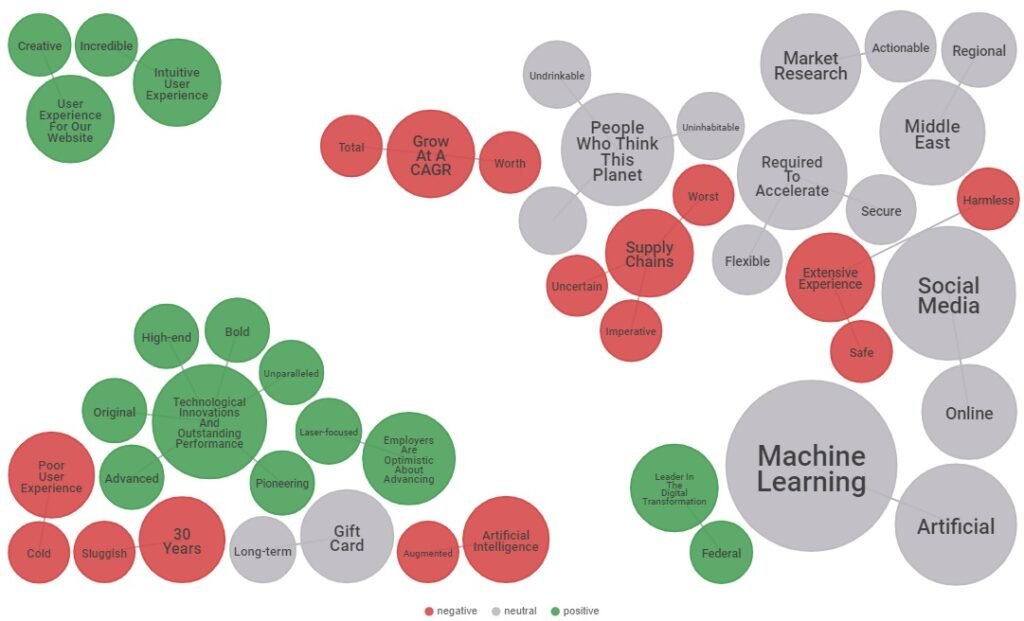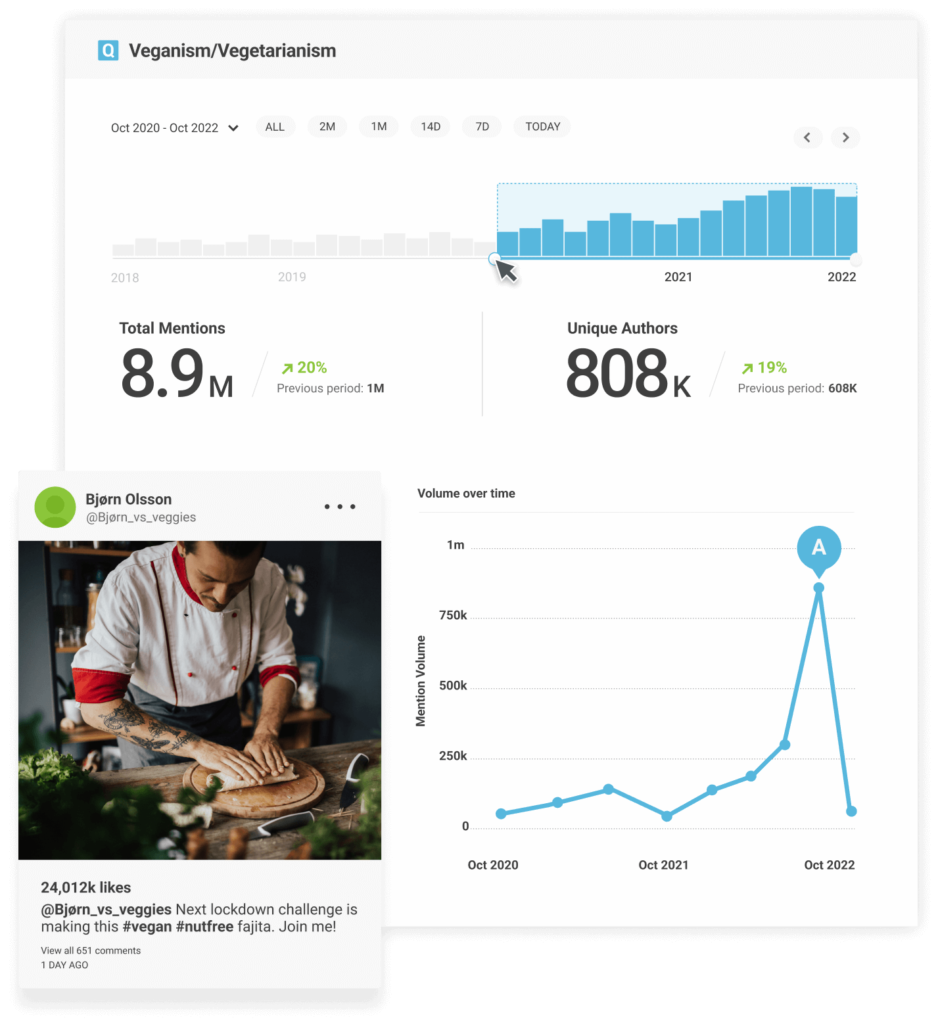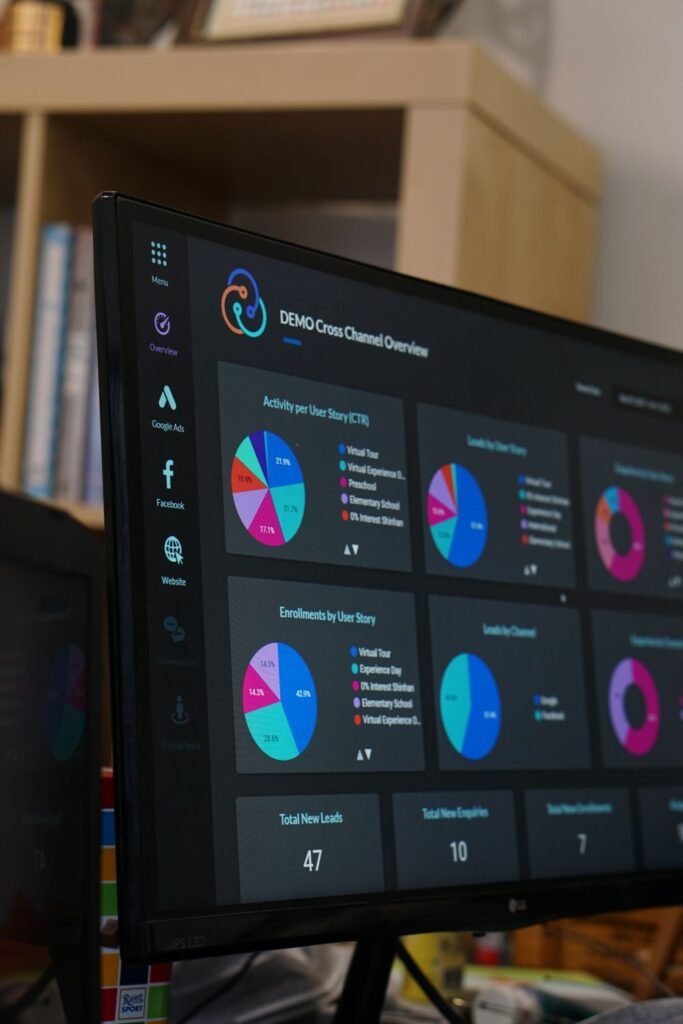Social listening is the process of monitoring, analyzing, and responding to conversations and mentions of your brand, products, or industry across social media platforms. It allows businesses to gain valuable insights into what customers are saying about them and their competitors, and to identify trends and patterns in customer behavior.

There are a few key steps involved in social listening:
- Identifying keywords and phrases to track: These might include your brand name, product names, industry-specific terms, and other relevant keywords.
- Setting up monitoring tools: This can be done through a variety of social listening software, such as Brandwatch, which allow you to track and analyze conversations across multiple social media platforms.
- Collecting and analyzing data: The software will collect data on the conversations and mentions of your brand, products, or industry, and allow you to analyze that data to gain insights into customer sentiment, brand perception, and competitor activity.
- Responding to feedback: Once you have identified key insights from your social listening data, you can use that information to inform your marketing and customer service strategies. For example, you might use the data to identify customer pain points and develop solutions to address them, or to identify key influencers and build relationships with them.

Some of the benefits of social listening include:
- Gaining valuable insights into customer sentiment and behavior: By monitoring and analyzing customer conversations, businesses can identify key trends and patterns in customer behavior and sentiment, and use that information to improve their products, services, and customer experience.
- Improving customer service: By monitoring customer feedback and complaints, businesses can identify customer pain points and take steps to address them, improving the overall customer experience.
- Identifying key influencers: By monitoring social media conversations, businesses can identify key influencers in their industry and build relationships with them.
- Staying ahead of the competition: By monitoring social media conversations, businesses can identify key trends and patterns in their industry, and use that information to inform their own strategies and stay ahead of the competition.
- Measuring the effectiveness of marketing campaigns: By monitoring social media conversations, businesses can measure the effectiveness of their marketing campaigns, identify what resonates with customers, and adjust their strategies accordingly.
Social listening is a valuable tool for businesses of all sizes that want to gain insights into customer sentiment, behavior, and preferences, improve their customer service, stay ahead of the competition, and measure the effectiveness of their marketing campaigns.
Social listening can be done by using software, but it’s also important to have a dedicated team to work on it as well. With the right approach, social listening can give a business a significant advantage in today’s digital landscape.
Blending external social listening data with internal data systems can provide even greater benefits for a business. By combining data from different sources, businesses can gain a more comprehensive understanding of their customers, products, and industry.
- A more complete picture of the customer: By blending external social listening data with internal data systems such as CRM and analytics, businesses can gain a more complete picture of their customers, including their demographics, behavior patterns, and preferences.
- Improved customer segmentation: By blending data from different sources, businesses can identify key segments of their customer base and tailor their marketing and customer service strategies to better meet the needs of those segments.
- Increased efficiency: By blending data from different sources, businesses can identify and eliminate inefficiencies in their operations, such as bottlenecks in the sales process or areas where customers are dropping off.
- Increased ROI: By blending data from different sources, businesses can identify opportunities for cost savings and revenue generation, such as cross-selling and upselling opportunities or areas where customers are most likely to convert.
- Greater ability to predict future trends: By blending data from different sources, businesses can identify key trends and patterns in their industry, and use that information to make predictions about future market conditions.
- Better decision making: By blending data from different sources, businesses can make more informed decisions, as they have access to a broader and more accurate set of data.

To blend external social listening data with internal data systems, a business needs to have the right tools and processes in place. This might include data integration and management software, as well as a dedicated team responsible for analyzing and interpreting the data.
Ultimately, blending external social listening data with internal data systems can provide a wide range of benefits for a business. While it may require additional investments in terms of software and human resources, it can be a game-changer in terms of strategic decision making and growth.





